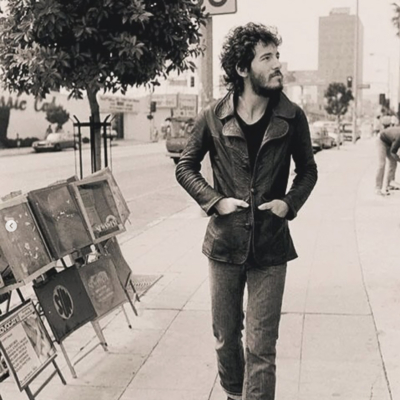Such is my despair at the escalating climate crisis that even the simplest of tasks have become existential undertakings.
A grocery shop now finds me quivering in a supermarket aisle, terrified of picking up, guilted into putting down item after item while phrases like “single-use plastic”, “carbon footprint” and “imported from Chile” ring siren-like in my ears. Greta told me to act like my house is on fire but, in the incendiary blaze of my hysteria, it rather feels like my mind is on fire – trapped in a conflict between wanting to make a difference and not knowing how. Attempting to become more eco-conscious is not a quick fix of easily implemented solutions but rather an assault of contradictory information, the only common theme of which being that I, in whatever I am doing or not doing, am wrong.
Never is this feeling of helplessness stronger than when performing something as simple as instinctive and unconscious as brushing my teeth. Think about it: how many of our mornings begin with the reach for a composite fusion of crude oil, petroleum and nylon or, as it’s commonly known, a toothbrush? This repeated jamming of bristled plastic into half-asleep mouths is an environmental epidemic as we discard (or at least the conscientious and hygienically diligent amongst us do) one toothbrush every three months. This extrapolates to the throwing away of 23 billion toothbrushes each year and the terrifying fact that our furious brushings will cause us to tear through 300 others during our lifetime.
This is on top of the fact that, thanks to the union between our penchant for dental hygiene and adoration of plastic’s disposability in the 1930s, nearly every plastic toothbrush ever made still exists today, bristling, I assume, at the indignity of having gone from the item doing the cleaning to the eyesore needing to be eradicated.
What to do?
It turns out the answer is not bamboozling but rather the much simpler “bamboo”. Fashioned from moso bamboo – a fast-growing, undemanding, and therefore sustainable plant – bamboo toothbrushes are a valid, eco-conscious alternative to the nebulous plastic brush. Fully biodegradable (once not addled by glues or other materials), they can be added to compost when disposing, thus breaking the plastic chain of toothbrush pollution. Moso bamboo is predominantly grown in China, yet even with this necessary shipping footprint, the environmental impact of its production, distribution and disposal is still far less than its plastic compadre, encapsulated in minimal, and generally compostable, packaging.
Ever-prickly, the one contentious aspect of the bamboo brush is its bristles, which are typically made from pig hair or nylon. With the former being biodegradable and the latter vegan, there is something of a trade-off to be made by the discerning consumer. However, if choosing the nylon-bristled brush, pollution can be minimised by removing the nylon bristles before composting. Procedures for removal are multitudinous and not a little amusing, varying from snapping the toothbrush head off like a guillotined Barbie to casually going at the bristles with pliers. Although, being honest, if I cannot be prevailed upon to pluck my own eyebrows with any regularity, this option does not bode well for midweek me.
This repeated jamming of bristled plastic into half-asleep mouths is an environmental epidemic, as we discard one toothbrush every three months.
There is clearly no argument for refusing to switch from a plastic to bamboo toothbrush. Even the excuses usually rolled out to justify shunning eco-friendly fare in favour of the comforting cocoon of our plastic reliables – eco products are “too expensive”, “unsanitary”, “poor quality”, “too much hassle” – don’t hold up.
Every brand I researched (VirtueBrush and Irish brand, Bambooth, are just two recommendations) were the same price, or only marginally more expensive, than plastic options. Bamboo is naturally antibacterial so, once rinsed well after use, poses no threat to oral hygiene. Its poorer quality is also mythologised, with studies proving it to be as effective at cleaning as a manual toothbrush. Finally, it could be argued it is actually easier to purchase a bamboo toothbrush as most online suppliers offer door-to-door delivery and many even a replacement service that will send you a new brush every few months.
Perhaps this one change might seem frivolous to you – a minute solution for a tsunamic problem. However, this column is not about trying to do everything – my attempts to do so usually end in the paralysis of inaction. Rather, instead of catastrophising over the mammoth or massive, this column instead seeks to focus on the meaningful, mindful and immediate.
I – lazy as I am – cannot stop brushing my teeth. I cannot suddenly renege on a dental routine that has existed – almost unchanged – for centuries; a tradition so vital to our wellbeing that in a 2003 survey it outranked cars, computers and even mobile phones, as the innovation humans cannot live without.
However, I can stop a product invented to promote cleanliness from becoming the scourge of brush-bedraggled shorelines. I can reinstate a toothbrush as the symbol of our continued evolution – the omniscient and now harmless trident that anoints a good day and absolves a bad. That is not everything, it is not nothing but it is something. It is my first – biodegradable – drop in the ocean.
Is there a case for electric toothbrushes?
While electric toothbrushes produce less landfill – one manual brush equals the weight of 100 electric heads – the environmental impact caused by their manufacture, disposal, and ongoing energy use make them as polluting as a manual plastic brush. Look, I’m going to be honest here. As well as my trusty bamboo, I have an electric toothbrush and will continue to have one until its overexcited bristles give up on me. My gums are not what they should be and therefore I understand and indeed, embody, the reluctance to let go of the enamel-saving Oral B. However, there are ways to make your electric brush as planet-friendly as possible. Firstly, only charge it when necessary and buy replacement heads in multipacks to minimise packaging. Extend its life cycle by minding it diligently and, when disposing, see if your brand offers a disposal scheme. If not, demand one. Never throw in regular waste.
LOVETHEGLOSS.IE?
Sign up to our MAILING LIST now for a roundup of the latest fashion, beauty, interiors and entertaining news from THE GLOSS MAGAZINE’s daily dispatches.













